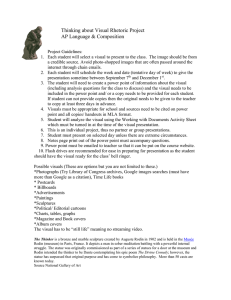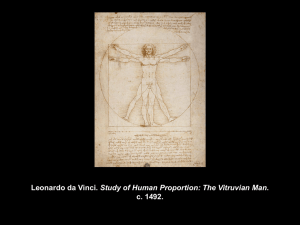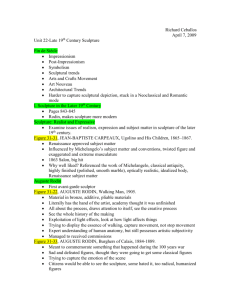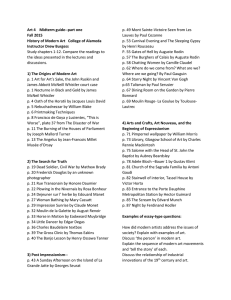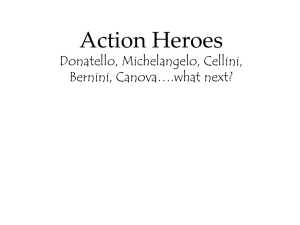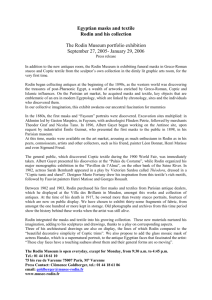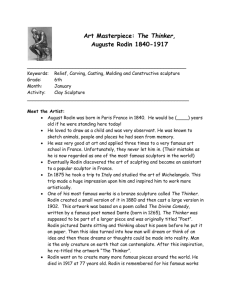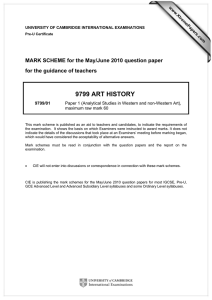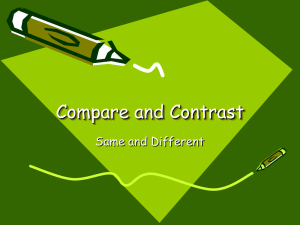PDF 3.6
advertisement
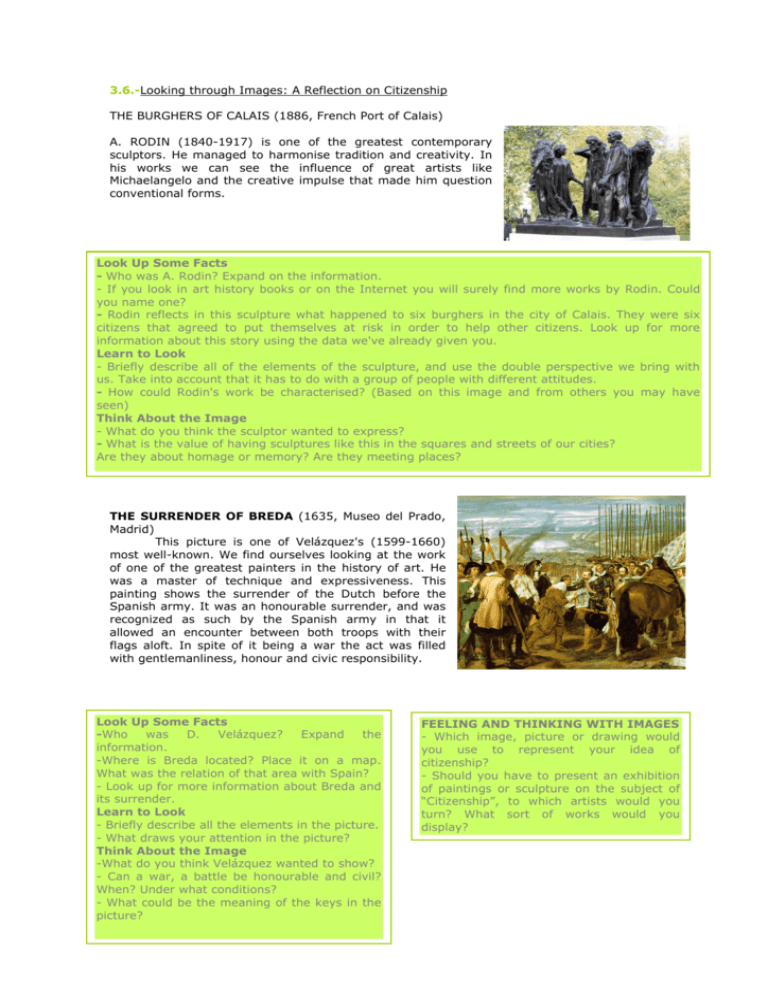
3.6.-Looking through Images: A Reflection on Citizenship THE BURGHERS OF CALAIS (1886, French Port of Calais) A. RODIN (1840-1917) is one of the greatest contemporary sculptors. He managed to harmonise tradition and creativity. In his works we can see the influence of great artists like Michaelangelo and the creative impulse that made him question conventional forms. Look Up Some Facts - Who was A. Rodin? Expand on the information. - If you look in art history books or on the Internet you will surely find more works by Rodin. Could you name one? - Rodin reflects in this sculpture what happened to six burghers in the city of Calais. They were six citizens that agreed to put themselves at risk in order to help other citizens. Look up for more information about this story using the data we've already given you. Learn to Look - Briefly describe all of the elements of the sculpture, and use the double perspective we bring with us. Take into account that it has to do with a group of people with different attitudes. - How could Rodin's work be characterised? (Based on this image and from others you may have seen) Think About the Image - What do you think the sculptor wanted to express? - What is the value of having sculptures like this in the squares and streets of our cities? Are they about homage or memory? Are they meeting places? THE SURRENDER OF BREDA (1635, Museo del Prado, Madrid) This picture is one of Velázquez's (1599-1660) most well-known. We find ourselves looking at the work of one of the greatest painters in the history of art. He was a master of technique and expressiveness. This painting shows the surrender of the Dutch before the Spanish army. It was an honourable surrender, and was recognized as such by the Spanish army in that it allowed an encounter between both troops with their flags aloft. In spite of it being a war the act was filled with gentlemanliness, honour and civic responsibility. Look Up Some Facts -Who was D. Velázquez? Expand the information. -Where is Breda located? Place it on a map. What was the relation of that area with Spain? - Look up for more information about Breda and its surrender. Learn to Look - Briefly describe all the elements in the picture. - What draws your attention in the picture? Think About the Image -What do you think Velázquez wanted to show? - Can a war, a battle be honourable and civil? When? Under what conditions? - What could be the meaning of the keys in the picture? FEELING AND THINKING WITH IMAGES - Which image, picture or drawing would you use to represent your idea of citizenship? - Should you have to present an exhibition of paintings or sculpture on the subject of “Citizenship”, to which artists would you turn? What sort of works would you display?
